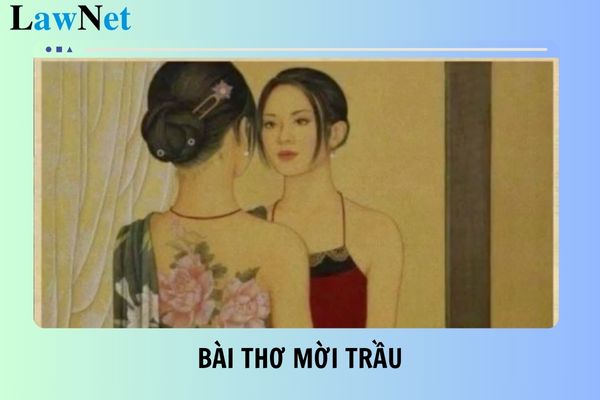What does Ho Xuan Huong want to convey through the poem "Mời trầu"? What are the required outcomes regarding the speaking and listening content in the 8th-grade Literature curriculum in Vietnam?
What does Ho Xuan Huong want to convey through the poem "Mời trầu"?
Students can refer to the analytical essay on things that Ho Xuan Huong wants to convey through the poem "Mời trầu" below:
|
Things that Ho Xuan Huong wants to convey through the poem "Mời trầu" The poem "Mời trầu" by Ho Xuan Huong is a concise work yet carries profound meanings, not only showcasing her poetic talent but also clearly revealing the thoughts and personality of a strong, confident, and decisive woman. Through the poem, Ho Xuan Huong invites not just a piece of betel quid in the literal sense but also conveys deep messages about love, relationships, and the value of individuals in feudal society.
Firstly, the images of the betel fruit and quid in the poem are not only common items in daily life but also symbols of love, attachment, and harmony between people. In folk culture, betel and areca are often seen as a connection of emotions, especially in marriage rituals. However, through Ho Xuan Huong’s use, the small betel fruit and pungent quid no longer appear perfect but become symbols of simplicity and ordinariness, without disguising imperfections. The act of making the quid shows Ho Xuan Huong’s initiative, affirming a strong personality, unafraid to express oneself, and not needing extravagance to prove one’s value. |
Note: The content is for reference only!

What does Ho Xuan Huong want to convey through the poem "Mời trầu"? What are the required outcomes regarding the speaking and listening content in the 8th-grade Literature curriculum in Vietnam? (Image from the Internet)
What are the required outcomes regarding the speaking and listening content in the 8th-grade Literature curriculum in Vietnam?
Under the General Education Program for Literature issued with Circular 32/2018/TT-BGDDT, the required outcomes regarding the speaking and listening content in the 8th-grade Literature curriculum in Vietnam include:
(1) Speaking
- Present opinions on a social issue, clearly stating viewpoints and arguments; use convincing reasoning and evidence (information technology may be used to enhance presentation effectiveness).
- Know how to deliver a short introduction about a book (by personal choice): provide the most important information; state the book's topic or theme and some notable artistic features.
(2) Listening
- Listen and summarize the content of another person's presentation.
- Grasp the main content of group discussions and be able to present that content.
What literary knowledge does the 8th-grade Literature curriculum in Vietnam include?
Under Section 5 of the Appendix of the General Education Program for Literature, issued together with Circular 32/2018/TT-BGDDT, the literary knowledge in the 8th-grade Literature curriculum in Vietnam is specified as follows:
Literary Knowledge
1.1. Imagination in literary works
1.2. Titles and how to set them for texts
1.3. Themes and main topics, how to determine main topics; structure
2.1. Plot, setting, characters, and language in comedic and historical stories
2.2. Single-strand and multi-strand plots
2.3. Main artistic techniques of satirical poetry
2.4. Some elements of prosody in seven-word quatrains and four-line verses of Tang poetry: composition, discipline, rules, rhymes, rhythm, opposition
2.5. Some form elements of a poem: language, imagery, composition, emotional flow
2.6. Conflict, action, characters, dialogues, and satirical techniques in literary scripts (comedy)
2.7. Some form elements of free verse (six, seven syllables): number of lines, words, rhymes, rhythm
3.1. Readers and how they individually perceive a literary text
3.2. Content reflection and the author's perspective on life and humans

